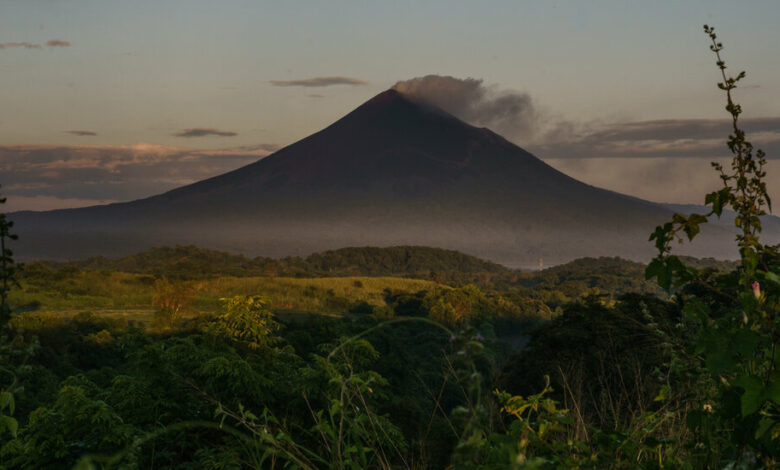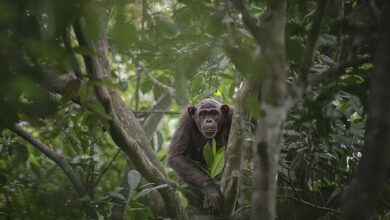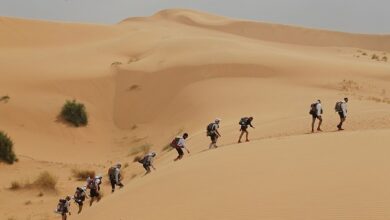The eternal appeal of the fascinating, deadly volcano

ADVENTURES IN VOLCANO COUNTRY: What volcanoes tell us about the world and ourselvesby Tamsin Mather
I live on a hill of pink granite, part of a geological formation that stretches across southern Connecticut and juts out of the ground here and there like a group of emerging whales.
Before my wife and I bought our house, we had an inspector look at it. ‘Well,’ he said, ‘your foundation goes a thousand miles into the earth – so you don’t have to worry about that.’
We have been on this quiet rocky ground for over twenty years and every year it becomes harder for me to imagine what it would be like to live in a place like Iceland or Indonesia. There is much to worry about as the solid earth turns to liquid, ash or gas and escapes from volcanoes.
Tamsin Mather, a geologist at the University of Oxford, has no such problems. She has spent her career visiting volcanoes to understand how they work, and she has come to see Earth not as a peaceful world shrouded in a stable crust, but as a sphere with barely contained geological storms.
“Adventures in Volcanoland” is organized around trips Mather has made throughout her career, starting with Mount Vesuvius, which she first visited as a child during a family vacation. Next comes the Nicaraguan volcano Masaya, which she studied as a doctoral student, and then volcanoes on other continents.
Mather’s book is aimed at readers like me: novices who wouldn’t know the difference between pumice and tephra if they hit us both on the head. At times, though, it reads like a textbook, its sentences laden with encyclopedic digressions.
It appears that she is lecturing to trainee volcanologists in these passages: “Using these compilations of the magnitude and timing (often determined by measuring the activity or concentrations of radioactive elements in the rocks associated with the eruption ) from different types of eruptions we can draw trends,” writes Mather. “We”? Not me.
Elsewhere, “Adventures in Volcanoland” waxes lyrical. On a family outing in southwest England, Mather shows her children a handful of sand “to conjure up for them from their leafy glint in the summer sunlight the great batholithic magma body in which these crystals grew.” On her visits to Masaya, she watches green parakeets flit past the crater and listens to colonies of bees buzzing in the soft volcanic soil.
For all the beauty Mather sees in volcanoes, she never forgets the danger they pose. “If they take your breath away, there is always the risk that one day they will never give it back,” she writes.
Yet Mather sees volcanoes as more than destroyers. They helped build the planet. When the young Earth was covered by a global ocean, Mather writes, volcanoes “began to form islands and then continents, pushing this new land out of the seas.”
We may owe our existence to volcanoes. It’s possible that the heat from deep-sea volcanoes, or lightning during eruptions, “helped rearrange some of the Earth’s atoms into the first primitive molecular building blocks, allowing biology to somehow begin,” Mather speculates.
In her own research, Mather has specialized in measuring the gases that volcanoes emit. Even when they don’t erupt, volcanoes emit enormous amounts of carbon dioxide. Without that heat-trapping gas, a glacier effect would replace the greenhouse effect and cool the planet’s temperature by almost 60 degrees.
The Earth is largely capable of keeping its climate stable. As volcanoes heat the planet, chemical reactions pull carbon dioxide from the air, eventually ending up deep underground.
However, this planetary thermostat is not enough to prevent volcanoes from periodically unleashing hell. Massive eruptions may be responsible for the most mass extinctions in the history of life.
Climate deniers point to the vast amounts of carbon dioxide emitted by volcanoes to downplay our own impact on the climate. But for Mather, the comparison underscores the depth of the crisis we’ve gotten ourselves into. “These natural emissions are nothing compared to what humans are producing,” she warns.
With our cars and coal-fired power plants, we have created a supervolcano. And if history is any guide, we are putting millions of species at risk of extinction, perhaps including our own. “If this current mass extinction occurs, it will parallel the human experiment, and when it is over, Earth’s volcanoes will still be there, in charge of whatever planet we leave behind,” Mather writes.
Mather’s book has upset my thoughts about my house. The pink granite beneath me gives me as solid a foundation as I could hope for, and yet it too began as a huge molten blob that pushed up through the Earth’s crust hundreds of millions of years ago. It cooled to a hard, crystalline rock, and as the softer overlying layers eroded away, the granite saw the sun.
It will remain solid for the rest of my life, but millions of years from now, Volcanoland may well send up a new mass of magma that will cover this land with new violence.
ADVENTURES IN VOLCANOLAND: What volcanoes tell us about the world and ourselves | By Tamsin Mather | Hanover Square | 374 pages | $30




